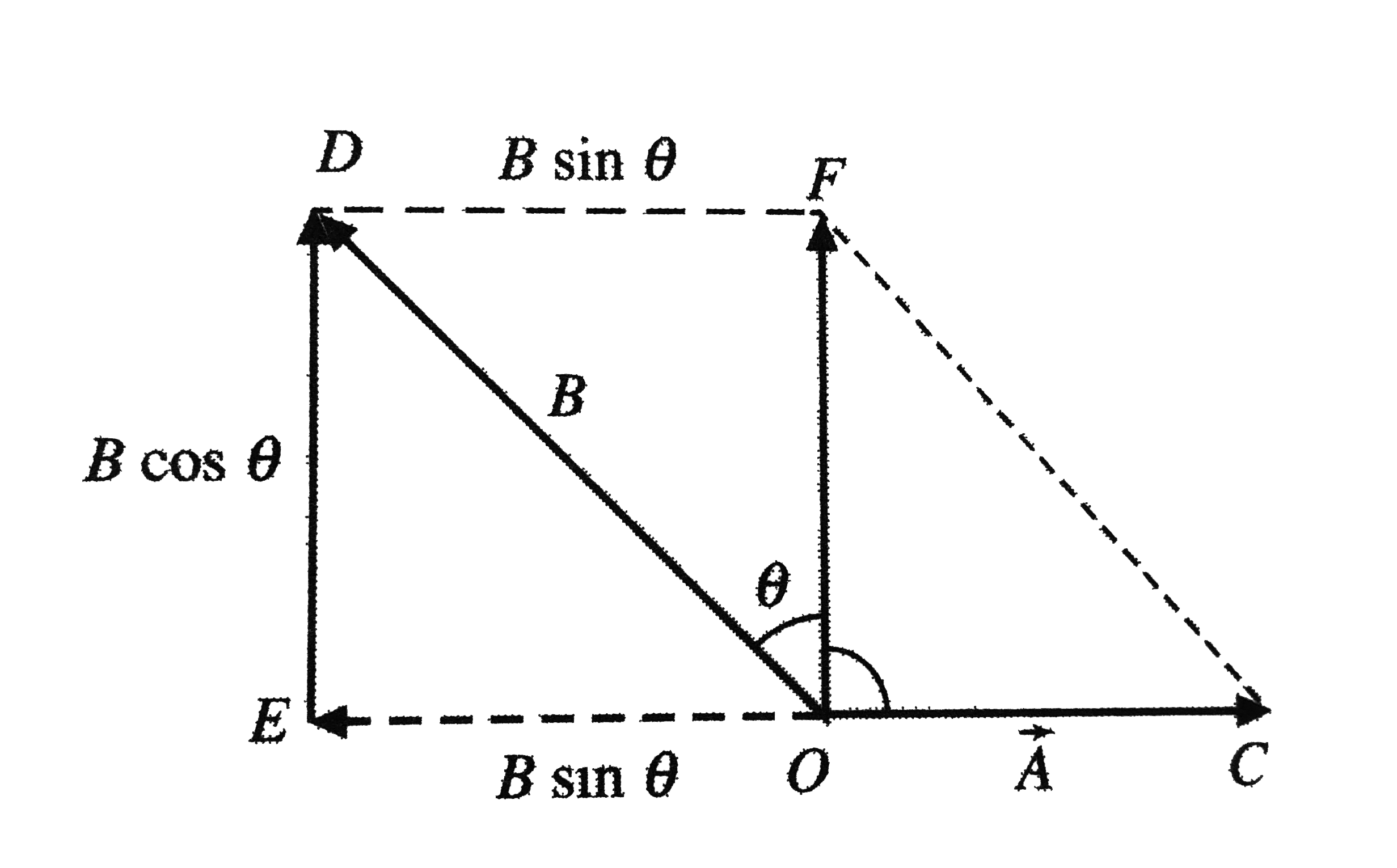If magnitude of the resultant of two vectors equal of magnitude, is equal to the magnitude of either of the vectors, what is the angle between them ?
To solve the problem, we need to find the angle between two vectors →A and →B given that their magnitudes are equal and the magnitude of their resultant vector →C is equal to the magnitude of either of the vectors.
1. Define the Vectors:
Let the magnitudes of the vectors →A and →B be x. Therefore, we have:
|→A|=|→B|=x
2. Resultant Magnitude:
The magnitude of the resultant vector →C when adding two vectors is given by the formula:
|→C|=√|→A|2+|→B|2+2|→A||→B|cosθ
Since |→C| is also equal to x, we can write:
x=√x2+x2+2x⋅xcosθ
3. Square Both Sides:
Squaring both sides of the equation gives:
x2=x2+x2+2x2cosθ
Simplifying this, we have:
x2=2x2+2x2cosθ
4. Rearranging the Equation:
Rearranging the equation leads to:
0=2x2+2x2cosθ−x2
This simplifies to:
0=x2+2x2cosθ
5. Factoring Out x2:
Factoring out x2 gives:
x2(1+2cosθ)=0
Since x2≠0, we can divide both sides by x2:
1+2cosθ=0
6. Solving for cosθ:
Rearranging gives:
2cosθ=−1
Thus:
cosθ=−12
7. Finding the Angle:
The angle θ for which cosθ=−12 is:
θ=120∘
Conclusion:
The angle between the two vectors →A and →B is 120∘.
Let the magnitudes of the vectors →A and →B be x. Therefore, we have:
|→A|=|→B|=x
The magnitude of the resultant vector →C when adding two vectors is given by the formula:
|→C|=√|→A|2+|→B|2+2|→A||→B|cosθ
Since |→C| is also equal to x, we can write:
x=√x2+x2+2x⋅xcosθ
Squaring both sides of the equation gives:
x2=x2+x2+2x2cosθ
Simplifying this, we have:
x2=2x2+2x2cosθ
Rearranging the equation leads to:
0=2x2+2x2cosθ−x2
This simplifies to:
0=x2+2x2cosθ
Factoring out x2 gives:
x2(1+2cosθ)=0
Since x2≠0, we can divide both sides by x2:
1+2cosθ=0
Rearranging gives:
2cosθ=−1
Thus:
cosθ=−12
The angle θ for which cosθ=−12 is:
θ=120∘
The angle between the two vectors →A and →B is 120∘.
Topper's Solved these Questions
- MOTION IN A PLANEBOOK - AAKASH SERIESCHAPTER - MOTION IN A PLANEEXERCISE - SHORT ANSWER TYPE QUESTIONS
6 Videos
- MOTION IN A PLANEBOOK - AAKASH SERIESCHAPTER - MOTION IN A PLANEEXERCISE - VERY SHORT ANSWER TYPE QUESTIONS
10 Videos
- MOTION IN A PLANEBOOK - AAKASH SERIESCHAPTER - MOTION IN A PLANEEXERCISE - EXERCISE-3 (Circular Motion)
7 Videos
- MOTION IN A STRAIGHT LINE BOOK - AAKASH SERIESCHAPTER - MOTION IN A STRAIGHT LINE EXERCISE - very Short answer type question
15 Videos
Similar Questions
Resultant of two vector of equal magnitude A is
View SolutionSquare of the resultant of two forces of equal magnitude is equal to three times the product of their magnitude. The angle between them is
View SolutionSquare of the resultant of two forces of equal magnitude is equal to three times the product of their magnitude. The angle between them is
View SolutionIf the angle between two vectors of equal magnitude P is θ the magnitude of the difference of the vectors is
View SolutionSquare of the resultant of two forces of equal magnitude is equal to three times the product of their magnitude. The angle between them is :
View SolutionIf the magnitude of sum of two vectors is equal to the magnitude of difference of the two vector, the angle between these Vector is
View SolutionIf the magnitude of sum of two vectors is equal to the magnitude of difference of the two vector, the angle between these Vector is
View SolutionTwo vectors of equal magnitudes have a resultant equle to either of them, than the angel between them will be
View SolutionIf the magnitude of two vectors are 4 and 6 and the magnitude of their scalar product is 12√2 what is the angle between the vectors?
View SolutionThe resultant of two vectors →A and →B is perpendicular to the vector →A and its magnitude is equal to half of the magnitude of the vector →B. Find out the angles between →A and →B.
 .
.
View Solution
